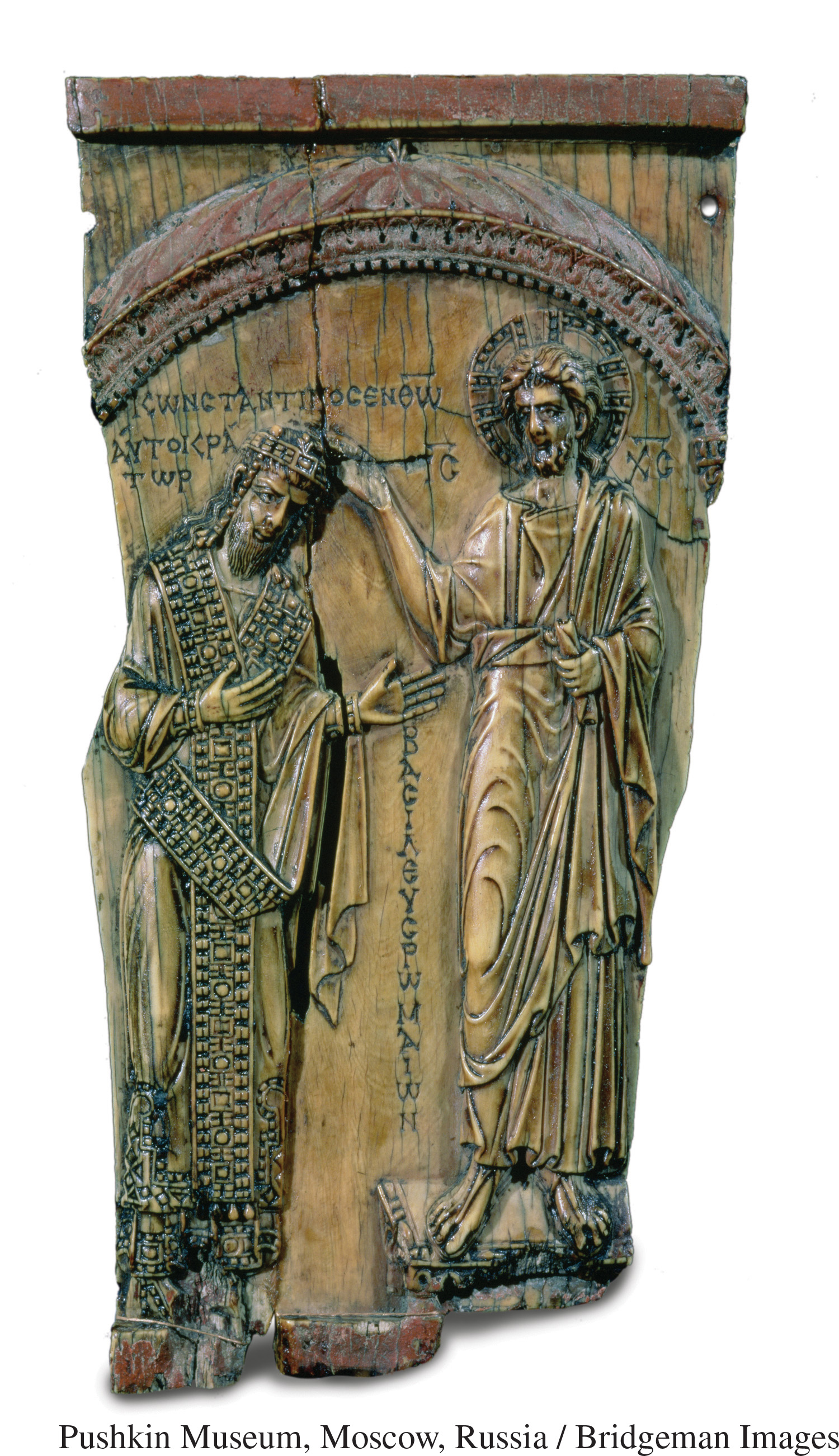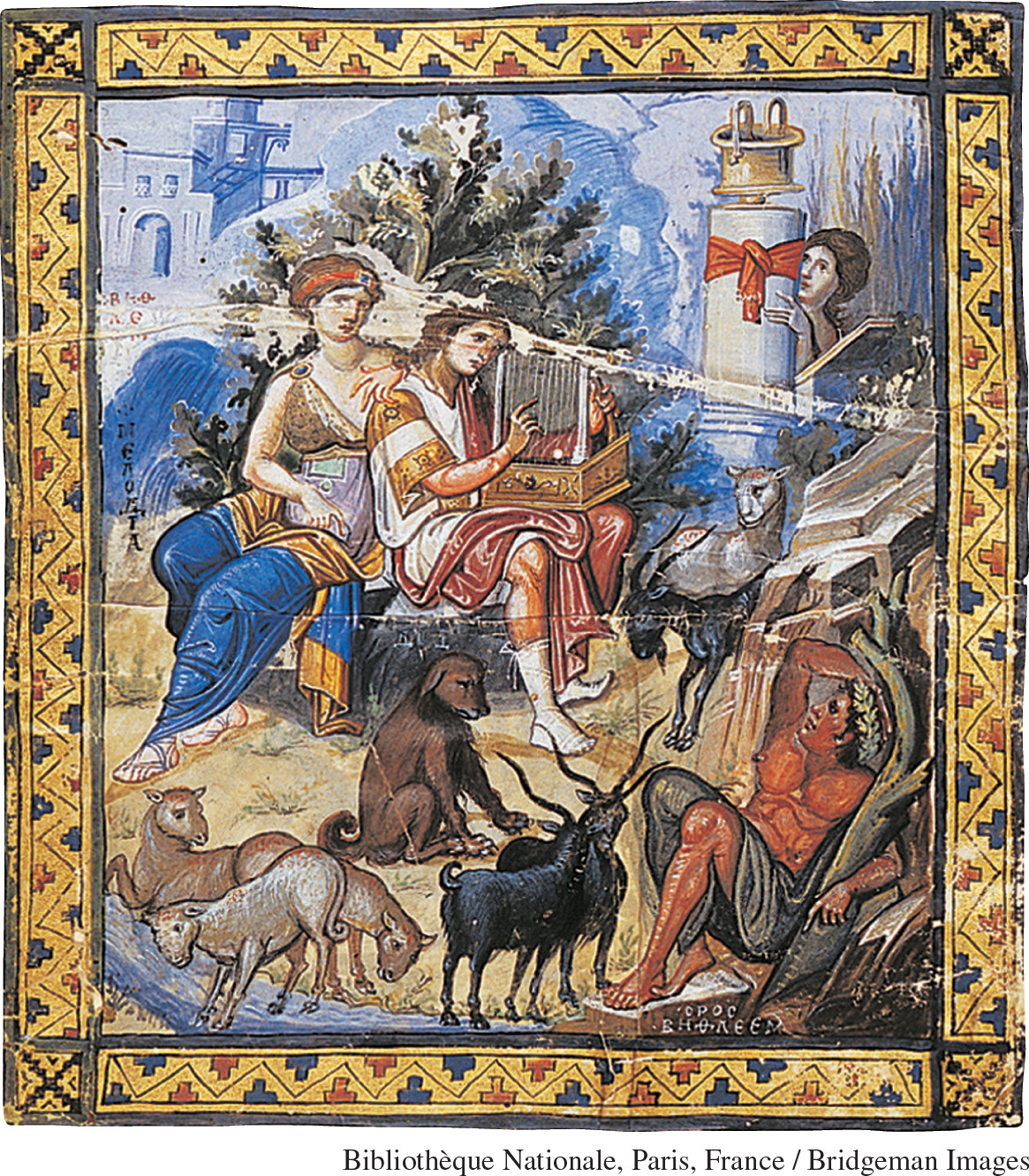Seeing History: The Many Styles of the Macedonian Renaissance


The Macedonian Renaissance supported works of art in many styles. Two of these works, both produced at Constantinople in the mid-ninth century, are shown here side by side.
At the top is a relief showing of the crowning of Emperor Constantine Porphyrogenitos (r. 913–959). Christ stands above the emperor, a scroll in his left hand and the crown, which he is placing on the emperor’s head, on his right. He is ramrod straight. The emperor, however, bows his head in humility. Both figures are flat and seem weightless. The artist here wanted to emphasize hierarchy and symbolism, not nature.
The image at the bottom is a real contrast to the relief: a manuscript illumination created for a sumptuous illustrated Psalter (Book of Psalms, one of the books of the Bible). It depicts David, who was considered the author of the psalms, in the center of the composition and dressed in classical garb. Wild animals surround him quietly, reminding viewers of the classical figure of Orpheus, who played music so beautifully that he attracted and tamed the beasts. Other classical elements include god- and goddess-like figures, such as the figure lounging in the right-hand corner, who is modeled on a river or mountain god even though he is labeled “Bethlehem.” Even the style of this painting is classical: the shrubbery, sky, and sketchy buildings in the back evoke the styles of Pompeii.
Question to Consider
What do these two images suggest about the variety of styles supported by the Macedonian Renaissance?